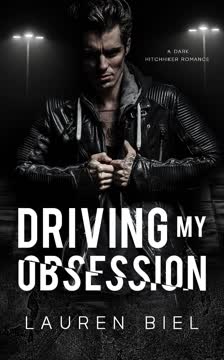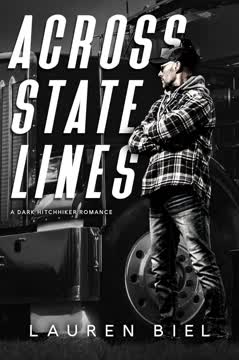Plot Summary
Scarred Souls Collide
Ambrose, a scarred underground fighter, and Oaklyn, a former professional dancer turned stripper, are both haunted by trauma and rage. Ambrose's scars are a roadmap of violence, both inflicted and received, while Oaklyn's are hidden, both physical and emotional. Their first encounter is fraught with judgment and misunderstanding—Ambrose sees Oaklyn as a symbol of everything he hates, while Oaklyn is simply trying to survive another night. Their worlds collide in a haze of neon, sweat, and desperation, setting the stage for a dark, obsessive connection neither can escape.
Stripped Dreams, Shattered Pride
Once a rising star in the dance world, Oaklyn's career was destroyed by a car accident, leaving her with a ruined ankle and a life in shambles. Forced to strip to survive, she endures daily humiliation, exploitation, and the predatory advances of her boss, Jake. Her pride is battered, but she clings to the remnants of her dignity, refusing to sell her body beyond the stage. The club is a purgatory where her dreams are mocked by every leering glance, and her isolation deepens as she's shunned by coworkers and family alike.
Dangerous Rides Home
After another degrading night, Oaklyn is stranded and forced to accept a ride from Ambrose. The car becomes a crucible of tension—Ambrose's contempt for her profession is palpable, and Oaklyn's vulnerability is laid bare. Yet, beneath the hostility, a dangerous fascination ignites. Ambrose, driven by a need for vengeance against women he deems "whores," fixates on Oaklyn as the vessel for his rage. Oaklyn, desperate and exhausted, senses the threat but is drawn to the darkness in him, not yet realizing how deep it runs.
Obsession Takes Root
Ambrose's internal monologue reveals a man at war with himself—his hatred for women like Oaklyn is matched only by his compulsion to possess and destroy them. He stalks her, leaving cryptic tokens and orchestrating psychological games. Oaklyn, meanwhile, battles her own demons—self-harm, shame, and the relentless grind of survival. Their lives spiral around each other, each encounter tightening the noose of obsession and dependency, as Ambrose's plans grow more elaborate and Oaklyn's defenses begin to crumble.
Broken Bodies, Broken Trust
Ambrose's need for control and Oaklyn's desperation for escape reach a breaking point. Oaklyn is assaulted by her boss, and Ambrose, witnessing her vulnerability, intervenes—not out of compassion, but possessiveness. The lines between protector and predator blur. Oaklyn's trust is shattered, not just in others but in herself, as she questions her own complicity and worth. Ambrose's internal conflict intensifies; he is both aroused and repulsed by Oaklyn, unable to decide whether to destroy her or save her.
The Stalker's Calling Card
Ambrose escalates his psychological torment, leaving acorns—symbols of Oaklyn's name and his claim—along with other disturbing tokens. He invades her private spaces, both physically and digitally, exposing her past and orchestrating her humiliation. Oaklyn's world narrows to a point of paranoia and fear, as she realizes she is being hunted. The club, once her prison, now feels like a death trap. Ambrose's obsession is no longer hidden; it is a force that shapes both their lives, pushing them toward an inevitable confrontation.
Lines Crossed, Boundaries Blurred
Ambrose drugs Oaklyn and violates her while she is unconscious, leaving her physically and emotionally devastated. The aftermath is a maelstrom of pain, confusion, and self-loathing for Oaklyn, who cannot reconcile her trauma with the twisted intimacy that has developed between them. Ambrose, too, is shaken—his act of violence does not bring the satisfaction he craves, only deeper obsession and guilt. Their relationship becomes a toxic dance of power, pain, and reluctant desire, with both participants complicit in their own destruction.
Past Lives, Present Pain
Both Ambrose and Oaklyn are forced to confront the ghosts of their pasts. Oaklyn's family, especially her mother, is weaponized against her by Ambrose, who exposes her stripping to them in a cruel act of revenge. Ambrose's own history of maternal abuse and abandonment is revealed, explaining but not excusing his violence. The two are bound by shared suffering, yet unable to break free from the cycles of harm that define them. Their connection is as much about mutual recognition as it is about attraction.
The Predator's Game
Fleeing her stalker, Oaklyn enlists Ambrose's help, unaware he is the very threat she's escaping. They travel to a remote cabin, where Ambrose's plan to kill her is complicated by growing feelings and Oaklyn's unexpected resilience. The isolation strips away pretense, forcing both to confront their true selves. Ambrose's predatory instincts war with his emerging protectiveness, while Oaklyn, cornered and wounded, discovers a will to live—and to fight back—that surprises them both.
Exposure and Betrayal
Oaklyn uncovers Ambrose's identity as her stalker, leading to a violent confrontation in the woods. The truth is a double-edged sword—Ambrose cannot bring himself to kill her, and Oaklyn, despite everything, cannot bring herself to escape. Their mutual betrayal cements a bond forged in trauma and violence, as they negotiate a new, uneasy truce. The power dynamic shifts, with both recognizing the darkness in the other and in themselves.
Drugged and Defiled
In a moment of agency, Oaklyn drugs Ambrose and uses his body for her own pleasure, mirroring the violation she suffered. The act is both vengeance and a twisted form of intimacy, blurring the lines between victim and perpetrator. When Ambrose awakens, he is both enraged and aroused, and the two engage in a cycle of mutual degradation and reluctant tenderness. Their relationship becomes a crucible in which pain and desire are indistinguishable, and both are forced to reckon with what they truly want.
The Hunter in Her Home
As Ambrose's obsession with Oaklyn grows, he turns his rage on those who have hurt her, particularly her boss Jake. The violence is cathartic but also terrifying, as Oaklyn realizes the extent of Ambrose's devotion—and his capacity for destruction. Together, they enact a brutal revenge on Jake, culminating in his death and the symbolic burning of the club. The act is both liberation and damnation, binding them together in complicity and blood.
Aftermath and Accusation
With their enemies vanquished, Ambrose and Oaklyn are left to face the consequences of their actions. The world outside is unchanged, but they are irrevocably altered. Oaklyn must decide whether to return to her old life or forge a new path with Ambrose, while Ambrose grapples with the possibility of redemption. Their love is a scar—ugly, painful, but proof of survival. The future is uncertain, but for the first time, both are willing to choose each other over the ghosts of their pasts.
Flight to Nowhere
Oaklyn flees the city, seeking safety and clarity, but finds that running from her problems only brings her back to Ambrose. Their reunion is fraught with tension and longing, as both acknowledge the impossibility of returning to who they were. The road trip becomes a metaphor for their journey—dangerous, unpredictable, and ultimately transformative. Together, they confront the reality that love, for them, is inseparable from pain.
Cabin in the Woods
In the seclusion of the cabin, Ambrose and Oaklyn's relationship reaches its most volatile point. Stripped of all distractions, they are forced to confront the truth of their feelings and the depth of their damage. The threat of violence is ever-present, but so is the possibility of healing. Their physical connection becomes a battleground for control, trust, and surrender, as both struggle to redefine what it means to be safe—and to be loved.
Cat and Mouse
Ambrose and Oaklyn engage in a literal and metaphorical game of cat and mouse, testing the limits of their endurance and their willingness to trust. The chase is both terrifying and exhilarating, culminating in a moment of mutual recognition: they are each other's predator and prey, victim and savior. The game ends not with death, but with a choice—to continue running, or to face each other honestly.
Surrender and Survival
In the aftermath of violence and revelation, Ambrose and Oaklyn make a tentative peace. Both have the opportunity to destroy the other, but instead choose to stay. Their relationship is no longer defined by power or pain, but by a shared commitment to survival and growth. The scars they bear are no longer marks of shame, but symbols of resilience and connection. Together, they begin to imagine a future that is not dictated by the past.
Vengeance and Fire
Ambrose and Oaklyn return to the city to confront their enemies and their fears. In a final act of vengeance, they destroy the club and the man who tormented Oaklyn, reclaiming agency over their lives. The fire is both literal and symbolic—a purging of the old, making way for something new. Their complicity in violence is acknowledged, but so is their capacity for change. The act binds them together, not as captor and captive, but as partners.
Choosing Each Other
With their pasts behind them, Ambrose and Oaklyn are faced with a choice: to continue the cycle of pain, or to build something new together. They choose each other, not out of desperation, but out of recognition and acceptance. Their love is imperfect, scarred, and hard-won, but it is real. Together, they begin to heal, finding redemption not in forgetting the past, but in forging a future that honors their survival.
Dancing Toward Redemption
Ambrose uses his inheritance to help Oaklyn realize her dream of opening a dance studio, transforming the site of her greatest pain into a place of hope and creativity. Their relationship, once defined by violence and obsession, becomes a partnership rooted in trust and mutual support. The scars they carry are no longer sources of shame, but reminders of what they have overcome. In choosing each other, they find the possibility of redemption—and the courage to dance again.
Characters
Ambrose Sinclair
Ambrose is a bare-knuckle fighter whose body and psyche are mapped by trauma. Disfigured by his mother's violence as a child, he is both predator and victim, channeling his rage into the ring and onto those he deems deserving. His obsession with Oaklyn is rooted in a need for control and vengeance, but evolves into a twisted form of love. Ambrose is deeply conflicted—capable of both brutality and tenderness, he oscillates between wanting to destroy Oaklyn and needing to save her. His journey is one of painful self-recognition, as he confronts the legacy of his abuse and the possibility of redemption through connection.
Oaklyn Grey
Once a promising dancer, Oaklyn's life is derailed by injury, abandonment, and exploitation. Forced into stripping, she endures daily humiliation but clings to her dignity and dreams. Oaklyn's vulnerability is matched by a fierce will to survive; she battles self-harm, shame, and the predations of men like Jake and Ambrose. Her relationship with Ambrose is fraught—she is both his victim and his equal, challenging his worldview and forcing him to confront his own pain. Oaklyn's arc is one of reclamation—of her body, her agency, and her future.
Jake
Jake is the owner of the strip club where Oaklyn works, and represents the worst of male entitlement and abuse. He preys on his employees, using his power to coerce and assault. Jake's violence is both physical and psychological, and his eventual downfall is a cathartic moment of justice for Oaklyn and Ambrose. He is a catalyst for much of the novel's violence, and his death marks a turning point in Oaklyn's journey toward agency.
Darby
Darby is Ambrose's boss in the underground fighting world, exploiting fighters for profit and orchestrating violence for entertainment. He is manipulative, ruthless, and ultimately disposable—his willingness to have Ambrose killed underscores the expendability of those at the margins. Darby's death is both a personal and symbolic victory for Ambrose, representing the destruction of a system that profits from pain.
Boris
Boris is a formidable opponent in the ring and a rare source of camaraderie for Ambrose. His respect for Ambrose is genuine, and he becomes a partner in the new fight club venture. Boris represents the possibility of loyalty and brotherhood in a world defined by betrayal and violence.
Oaklyn's Mother
Oaklyn's mother is emotionally abusive, withholding love and support when Oaklyn chooses dance over a more "respectable" career. Her rejection is a wound that shapes Oaklyn's sense of self-worth, and her later condemnation of Oaklyn's stripping is weaponized by Ambrose. She embodies the societal judgment that Oaklyn must overcome to reclaim her life.
Marty
Marty is the fighter hired to kill Ambrose in the ring, representing the ever-present threat of violence and the expendability of those in the underground world. His presence heightens the stakes and forces Oaklyn to risk everything to save Ambrose.
The Kursicki Brothers
The Kursicki brothers are brought in to deal with Darby, embodying the brutal justice of the world Ambrose and Oaklyn inhabit. Their actions are decisive and final, clearing the way for Ambrose and Oaklyn to build something new.
Oaklyn's Father
Though less present than her mother, Oaklyn's father's absence and tacit disapproval contribute to her sense of abandonment and failure. His silence is as damaging as her mother's words, reinforcing Oaklyn's isolation.
The Club Girls
The other dancers at the club serve as both mirror and foil to Oaklyn—some are complicit in her isolation, others are victims in their own right. Their attitudes reflect the internalized misogyny and competition fostered by their environment, and their presence underscores Oaklyn's loneliness and resilience.
Plot Devices
Dual Narration and Unreliable Perspective
The novel employs a dual narrative structure, alternating between Ambrose and Oaklyn's perspectives. This device allows for deep psychological exploration, revealing the unreliability of each character's self-perception and the ways trauma distorts reality. The shifting viewpoints create tension and ambiguity, forcing the reader to question motives and sympathies. The unreliable narration is heightened by the characters' own confusion and self-deception, blurring the line between victim and perpetrator, love and obsession.
Symbolism and Motifs
Acorns, left by Ambrose as a calling card, symbolize both his claim over Oaklyn and the possibility of growth from trauma. Scars—physical and emotional—are ever-present, marking bodies and psyches as sites of violence and survival. The stage, whether in the club or the imagined dance studio, represents both degradation and the potential for transformation. These motifs reinforce the novel's themes of pain, resilience, and the search for meaning in suffering.
Power Dynamics and Consent
The novel's central tension revolves around power—who holds it, how it is wielded, and whether it can be shared. Consent is repeatedly violated, withheld, and eventually renegotiated, reflecting the characters' struggle to reclaim agency in a world that denies it. The shifting power dynamics between Ambrose and Oaklyn drive the narrative, culminating in moments of mutual surrender and choice.
Foreshadowing and Reversal
The narrative is laced with foreshadowing—Ambrose's threats, Oaklyn's dreams, the ever-present danger of the club and the ring. These elements are later reversed or subverted, as characters defy expectations and choose new paths. The initial promise of violence gives way to the possibility of healing, and the cycle of revenge is broken not by death, but by the choice to live.
Setting as Character
The novel's settings are more than backdrops—they are active participants in the story. The club is a site of exploitation and humiliation; the ring is a crucible of violence and survival; the cabin is both sanctuary and prison. Each setting reflects and amplifies the characters' internal states, shaping their actions and destinies.
Analysis
Driving My Obsession is a dark, unflinching exploration of the ways trauma shapes identity and relationships. Through its dual narrative, the novel delves into the psychology of both victim and perpetrator, refusing easy answers or moral absolutes. The story interrogates the nature of consent, the allure of power, and the possibility of healing in the aftermath of violence. At its core, the book is about two broken people who find, in each other, both the mirror of their pain and the hope of something more. Their love is not redemptive in the traditional sense—it does not erase the past or guarantee a happy ending—but it is a testament to the resilience of the human spirit and the capacity to choose life, even when death seems easier. The novel's ultimate message is that survival is not just about enduring pain, but about finding meaning and connection in its wake. In a world that profits from suffering, Ambrose and Oaklyn's decision to build something new—together—is a radical act of hope.
Last updated:
Review Summary
Driving My Obsession is a highly controversial dark romance novel that has polarized readers. Many praise its intense, twisted storyline and complex characters, while others criticize its graphic content and romanticization of abuse. The book follows Ambrose, a deeply damaged man seeking revenge, and Oaklyn, a former ballerina turned stripper. Their relationship is violent, non-consensual, and obsessive. Readers are divided on whether the characters' eventual connection is redemptive or problematic. The novel contains numerous triggers and is not recommended for sensitive readers.
Similar Books
Download PDF
Download EPUB
.epub digital book format is ideal for reading ebooks on phones, tablets, and e-readers.

















